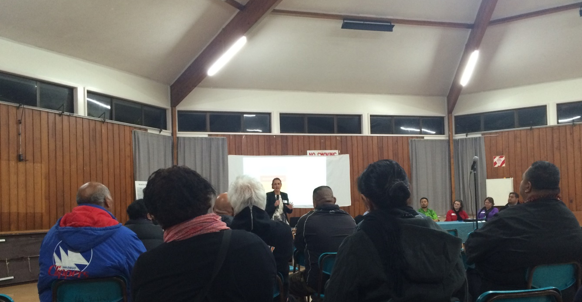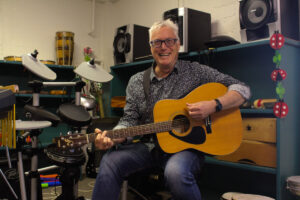State housing tenants stymied by language barrier
They all speak English but a serious language barrier is getting in the way of a new housing development.

Pacific elders fear their community will miss out on home ownership opportunities because of overly technical language used by the Tamaki Regeneration Company (TRC).
TRC representatives were met with silence from around 50 people who attended a Thursday night event at the Tamaki Pacific Islanders Presbyterian Church aimed at helping the Pacific community understand how the Tamaki regeneration process will affect them.
Concerns were raised by attendees around the technical language used in presentations and how its complexity could exclude many Pasifika people from the house ownership programmes on offer.
Simpler language and translations were requested.
“I cannot catch up with the language; it’s as simple as that. It’s not your fault; you’re speaking your own natural language,” said one attendee.
Another audience member said publically funded TRC had failed in its responsibility of care to Pacific residents by not communicating clearly.
“Can you hear the silence tonight? That’s the silence of dissatisfaction. Let me make this loud and clear. TRC you have failed Pacific people.”
TRC Programme Manager Tevita Malolo agreed the language used at the meeting was unclear and promised they would try to make future communication simpler.
“We’ve got it wrong, we understand that. Give us another chance to come back to our communities,” he said.
Event organiser Glen Tuala said the Pasifika community had attended because they want to be a positive part of the regeneration process.
“It hurts if our people are going to be left behind simply because they cannot understand the opportunity.”
Government and Auckland Council owned TRC is replacing 2500 social homes in Glen Innes, Panmure and Point England with the same number of social homes plus an additional 5000 homes which will be a mix of affordable homes and homes for private sale.
Pacific people make up 36 percent of the population of the regeneration area and tenant 51 percent% of the social housing.
Spokespeople from the TRC and New Zealand Housing Foundation (NZHF) presented options for buying the affordable houses built as part of the regeneration process.
These included a “pathway to housing independence” programme run by TRC which encourages people into study or employment in the construction area where they expect 15,000 to 20,000 jobs will be created during the rebuild.
Charity organisation NZHF, who hope to partner with TRC, presented an affordable equity scheme where people with a $10,000 deposit and earning $75,000 – 90,000 a year could qualify to share the cost of a home with the NZHF.
TRC’s General Manager Strategy and Operations Shelley Katae wants to bring back Pacific residents who have left Tamaki due to rising rents and get them into an affordable housing product.
I want to be really clear, it’s not easy; you have to have an income at a certain level to be able to take up the affordable housing product,” she said, stressing work needs to be done to increase skills and employment opportunities.
“Over 80 percent of our Pacific whanau are earning under $35k per annum and that’s not going to be enough to own a home in Tamaki.”




